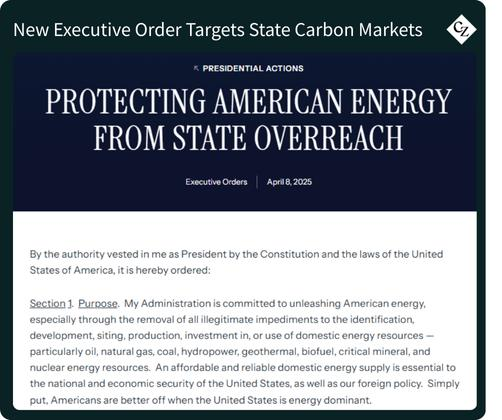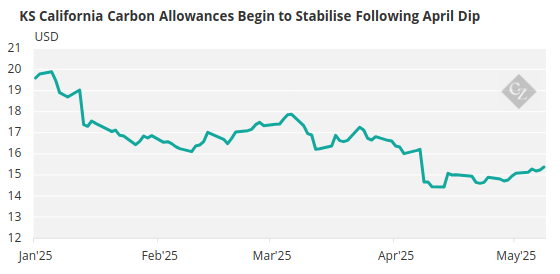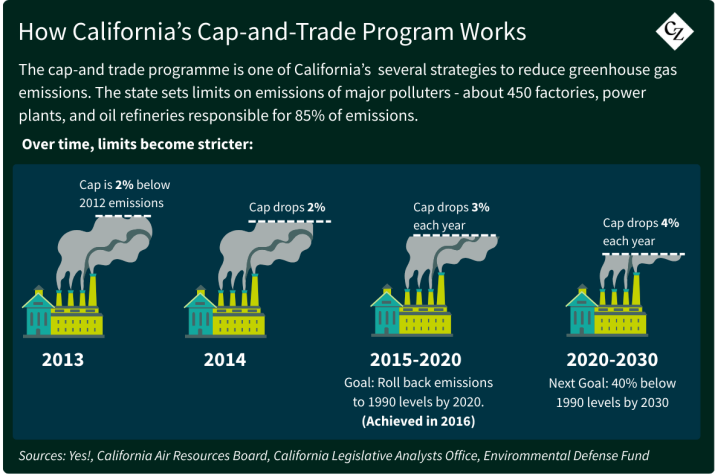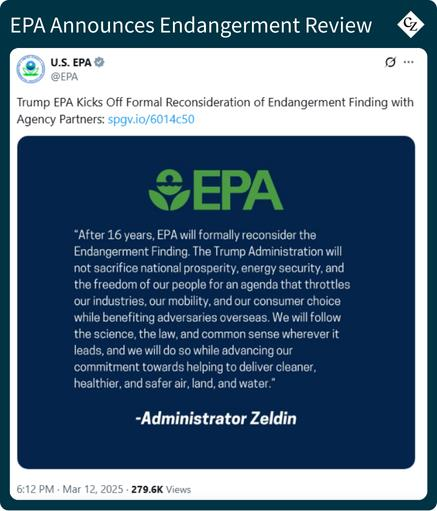Insight Focus
CCA prices have fallen by a quarter in 2025. This comes amid pressure as the Trump Administration seeks to close the state’s market. Efforts are also underway to revoke key federal climate policy decision.
Executive Order Rattles CCA Futures
Carbon allowance prices in California have slumped by as much as a quarter year-to-date, as traders have shied away amid legal assaults from the White House. Delays in reauthorising the cap-and-trade system for the post-2030 period are further dampening enthusiasm.
December 2025 California Carbon Allowance (CCA) futures began 2025 above USD 36/tonne on the ICE Futures US Exchange, but have steadily declined as market participants reacted negatively to ongoing political and regulatory delays.
The benchmark futures contract hit a low of USD 26.77/tonne in late April as traders took to their screens following the end of formal trading on April 9. This marks the day after President Donald Trump issued an Executive Order directing the Attorney General to investigate state-level carbon markets and report back within two months.

The executive order, entitled “Protecting American Energy from State Overreach,” requires the Attorney General to identify “all State laws…burdening the…use of domestic energy resources that are or may be unconstitutional, pre-empted by Federal law, or otherwise unenforceable,” and to “take all appropriate action to stop the enforcement of State laws” that are determined to be illegal.
The Executive Order criticised California’s cap-and-trade program in particular, claiming that it “forces businesses to pay large sums to ‘trade’ carbon credits to meet [the state’s] radical requirements.”
The CCA market stabilised after the initial plunge as participants wait for further developments, while California state leaders including Governor Gavin Newsom have issued staunch defences of the carbon market and made clear their intention to re-authorise the market for the period after 2030.

Source: Barchart
Governor Newsom said that the market mechanism has cut statewide emissions by 20% since 2000, even as the economy has grown 78%.
California’s Air Resources Board published an annual report last week, in which it listed nearly USD 33 billion in revenues raised by the cap-and-trade market. Of this total, around USD 12 billion has been spent on projects that are expected to reduce emissions by 116 million tonnes. However, California won’t rely on numbers alone to defend its carbon market.
White House Renews Legal Battle
The cap-and-trade system has come under attack from the White House before. In 2019, the Justice Department under President Trump sued the state for engaging in a cross-border treaty with the province of Quebec, whose market is linked to California’s.

The US Constitution outlaws states from entering agreements with foreign jurisdictions, but numerous experts have pointed out that numerous US states have entered into hundreds of bilateral agreements with neighbouring foreign jurisdictions, such as the 1985 Great Lakes Charter.
While this line of attack failed in 2019, there are other legal avenues for the White House to pursue. The “commerce clause” of the constitution gives Congress the power to regulate commerce both with foreign nations and among the states.
And since California’s carbon market covers emissions that are generated by out-of-state utilities who sell electricity into California, the courts might view this as inter-state commerce and declare it unconstitutional. It’s unlikely, though, that this would lead to the market being halted, since out-of-state emissions make up just 4% of the total.
Legal experts have also suggested that the Federal Energy Regulatory Commission could be ordered to file suit against California, using emergency power provisions which allow it to take action during energy crises to ensure adequate service and protect the public.
Trump Administration Targets Climate Regulation
And while California faces off against legal challenges, the federal government under President Trump is also seeking ways to eliminate the key environmental justification for nationwide climate action. The Environmental Protection Agency’s new Administrator, Lee Zeldin, has announced that the agency will review the “endangerment finding”—a move that casts additional doubt on all regulations issued under its authority.

The EPA’s Endangerment Finding, confirmed by the Supreme Court in 2009, concluded that greenhouse gases pose a threat to the public health and welfare of both current and future generations. This ruling provides the legal foundation for federal and state-level actions to reduce emissions under legislation such as the Clean Air Act.













